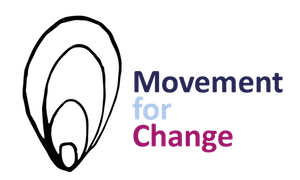Back in the ‘oughts’ I was working in charities, first in Fair Trade internationally and then back in London, in financial inclusion projects. It was fast moving work with high pressure targets and we were all working flat out with limited resources. Staff turnover was incredibly high as intermittent government contracts took their toll on people’s finances and morale. I found myself working increasingly long hours to stave off a feeling of being slightly out of control, and not in a good way.
I noticed people around me getting worn out, stressed, and into strange conflicts. I found myself feeling flat and disengaged more often than not, despite still deeply caring about the work. It seems that dealing with conflict, taking care of ourselves and nurturing the inner life can get left out when we become entirely focused on transforming the world outside ourselves.
It felt so confusing – here I was doing this values-led work with these wonderful people, but somehow we were all either exhausted or miserable. Eventually, I came to the conclusion that there had to be a better way.
I embarked on a fairly classic phase of ‘seeking’ – looking around for things that might help. I went to Quaker meetings, Buddhist meditation sessions, and some short retreats. I did more movement, including yoga. I studied economics. I went for some counselling, and then for some really good counselling. I cast the net wide.
Buddhist philosophy and practice showed me a view of the world that drew together lots of things I already felt and believed, but had never made sense of as a whole before. And meditation. The counsellor I worked with helped me understand that believing I had to control the world around me – even if I was trying to make it better – was a recipe for unhappiness. And the non-violence work, it turns out, was vital in helping me to recognise and understand my emotions, particularly anger and sadness – and to learn to communicate more effectively during conflict.
All of these practices share the foundation of embodied awareness – the ability to recognise and work with what’s going on inside, rather than shutting it down or being run by it. So suddenly, my yoga practice, which had been going on all along, since my teens, made sense.
Slowly I was able to find my way back to a healthier relationship with work, and more supportive working patterns. It began to dawn on me that the tools I had discovered might be useful to others, too.


